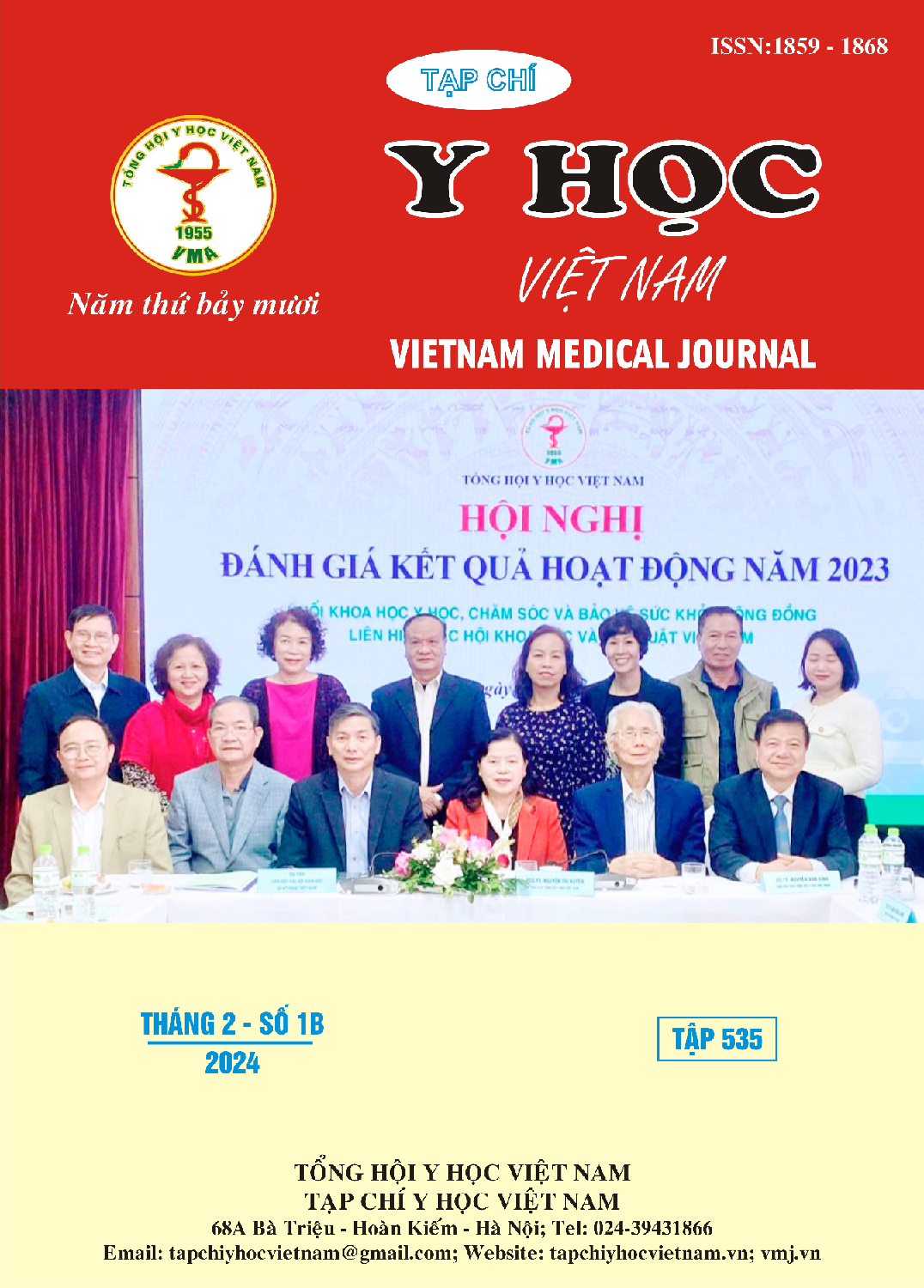MEDICAL TREATMENT OF CHRONIC HEART FAILURE WITH REDUCED EJECTION FRACTION AT OUTPATIENT CLINIC OF BACH MAI HOSPITAL
Main Article Content
Abstract
Aims: This study aims to evaluate the status of medical treatment of chronic heart failure with reduced ejection fraction (HFrEF) patients with four foundational therapies according to the current clinical guidelines at Outpatient Clinic, Bach Mai Hospital. Results: The proportions of patients who received four, three, two, and one of foundational drugs were 55.3%, 34.0%, 9.1%, and 1.6%, respectively. The prescription rate of renin-angiotensin inhibitors (RASi), beta-blockers (BB), mineralocorticoid receptor antagonists (MRA), and SGLT2 inhibitors (SGLT2i) were 96.8%, 76.3%, 87.7%, and 82.6%, respectively. Treatment expense was the most common reason for the lack of treatment of SGLT2i and RASi (86.4% and 62.5%, respectively), while adverse effects and contraindications were the leading cause of MRA and BB’s lack of prescription. 100% and 68% of patients received SGLT2i, and MRA achieved the optimal dose. Only 3.7% and 3.1% of patients reached the optimal doses of RASi and BB, respectively. The leading cause of suboptimal dose treatment was intolerance with higher doses (symptomatic hypotension, progressive kidney failure, and hyperkalemia). Conclusion: Most patients received three to four foundation heart failure therapies; however, many patients did not reach optimal doses. Adverse effects, contraindications, and high costs of treatment were the main barriers to implementing guideline-directed therapy.
Article Details
Keywords
Heart failure with Reduced Ejection Fraction, foundational heart failure therapies, guideline-directed medical treatment.
References
2. McDonagh TA, Metra M, Adamo M, et al. 2021 ESC Guidelines for the diagnosis and treatment of acute and chronic heart failure. Eur Heart J. 2021;42(36): 3599-3726. doi:10.1093/ eurheartj/ehab368
3. Bassi NS, Ziaeian B, Yancy CW, Fonarow GC. Association of Optimal Implementation of Sodium-Glucose Cotransporter 2 Inhibitor Therapy With Outcome for Patients With Heart Failure. JAMA Cardiology. 2020;5(8): 948-951. doi:10.1001/ jamacardio.2020.0898
4. GS.TS. Đặng Vạn Phước, GS.TS. Nguyễn Lân Việt, GS.TS. Huỳnh Văn Minh. Khuyến cáo của Hội Tim mạch quốc gia về chẩn đoán và điều trị suy tim cấp và suy tim mạn năm 2022.
5. Lê Ngọc Lan Thanh. Khảo Sát Tình Hình Điều Trị Suy Tim Tâm Thu Theo Khuyến Cáo ACC 2013. Luận văn Thạc sỹ Y học. Đại học Y dược Thành phố Hồ Chí Minh; 2013.
6. Nguyễn Ngọc Thanh Vân, Nguyễn Đinh Quốc Anh, Hoàng Văn Sỹ, Châu Ngọc Hoa. Khảo sát điều trị suy tim theo khuyến cáo của hội tim châu Âu 2016. Tạp chí Y Học thành phố Hồ Chí Minh. Tạp chí Y Học thành phố Hồ Chí Minh. 2021;25(2):35-41.
7. McMurray JJV, Solomon SD, Inzucchi SE, et al. Dapagliflozin in Patients with Heart Failure and Reduced Ejection Fraction. New England Journal of Medicine. 2019 ;381(21): 1995-2008. doi:10. 1056/NEJMoa1911303
8. Brunner-La Rocca HP, Linssen GC, Smeele FJ, et al. Contemporary Drug Treatment of Chronic Heart Failure With Reduced Ejection Fraction: The CHECK-HF Registry. JACC Heart Fail. 2019; 7(1): 13-21. doi: 10.1016/ j.jchf.2018.10.010


